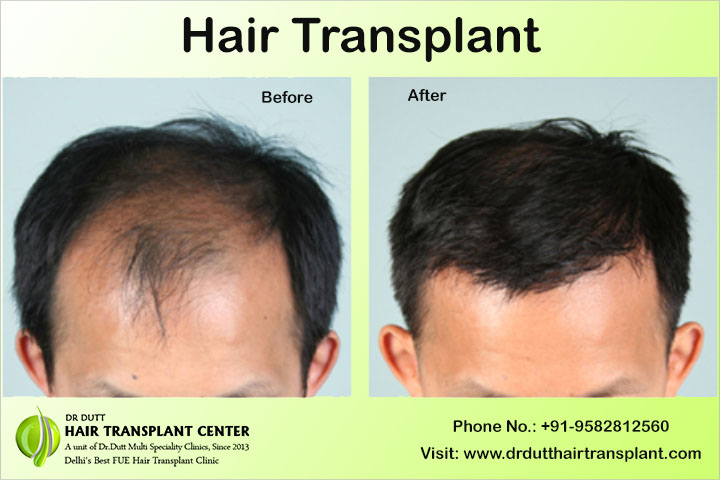Everyone is clear that the key to a hair graft is that the hair transplanted to the recipient area, after a while, grows back and never falls out again. It is this that makes FUE Hair Transplant in Delhi the only truly definitive solution against baldness. But is it just as clear what happens to the donor area? Is this area, where the follicles genetically immune to alopecia are extracted, is left without hair after the intervention? It is a common doubt and concern in many patients, so we are going to dedicate this post to trying to solve it.
First of all: how is the hair graft process?
Hair microsurgery consists of selecting the most suitable follicular units, extracting them with precision from the donor area of the patient, preserving them and reimplanting them follicle by follicle in the recipient area, respecting the angle and natural depth of the hair. The procedure is minimally invasive, so recovery is quick and does not leave scars. Thus, a natural and permanent result is obtained that does not damage the scalp, explains the hair transplant surgeon in Delhi.
During the first weeks after the Hair Transplant in Delhi, the postoperative recovery phase occurs, which usually includes redness, swelling, itching and crusting. After this period, the grafts have already taken root and healed, and it only remains to wait for the hair to grow back progressively over the following months. Although the new hair can be seen almost completely from the third or fourth month, usually it is not until the year when the definitive results are obtained. A relatively long process, but definitely worth it, says the hair transplant doctor in Delhi.
What is the donor area for a hair graft? Where do you get my hair from?
The one known as the donor zone covers the entire occipital and temporal area of the scalp. That is, the entire region located between the crown and the nape, as well as the sides of the head between the ears and the temples. The follicles in this entire area are immune to the negative effects of dihydrotestosterone (DHT), the main hormone responsible for androgenic alopecia. Therefore, even if they are transplanted to another part of the scalp, they will still not be affected by the fall, explains the hair transplant doctor in Delhi.
The key question: does donor hair grow back in a hair graft?
The quick (and reassuring) answer is yes. Hair grafting is not about changing the area of baldness. But how is it possible for hair to grow back in the donor area if the follicles have been removed? The explanation lies in the fact that the same follicular unit can contain between 1 and 4 hairs (2.2 on average). Therefore, what is done is not to extract all the follicles present in the donor area, but to select the most suitable (those that contain the most hairs), taking care at the same time not to remove all of them from the same point, but distributed throughout the area, explains the hair transplant surgeon in Delhi.
In this way, enough hair is obtained to repopulate the recipient area without leaving the donor area deserted. The follicles that remain in the donor area (which are shaved to perform the intervention) grow back naturally and, in doing so, more than cover what has been extracted. All this is of vital importance, since it is the follicular density of the donor area that defines the suitability of a patient to undergo a graft, in addition to marking the limit of follicles that can be transplanted without affecting the appearance of said region, says the hair transplant doctor in Delhi.
Evolution of the donor area of a hair graft: 2 weeks after the intervention
Having clarified that the hair does grow back in the donor area after the hair graft, we are going to see in a little more detail how the process evolves.
2 days later
As a result of the anaesthesia and the punctures, the area of the neck is left with a sensation like “corking” after the intervention. After two days, sensitivity returns. As a negative counterpoint, a certain itch may also appear with it. It is very important not to scratch to relieve the itch, but to apply saline or a mild topical pain reliever.
4 or 5 days later
Small scabs or skin scales begin to appear, as a result of the healing of the incisions made. They should be allowed to fall naturally, without scratching or tearing, to avoid visible scars. It is advisable to thoroughly wash the area with warm water and neutral shampoo. During this phase it is still normal to feel certain discomforts, such as itching or a feeling of tightness, which can usually be tolerated without the need to resort to painkillers.
1 week later
The swelling and scabs will become increasingly unnoticeable. Little by little the area will be fully recovered, allowing the hair to grow back.
2 weeks later
After two weeks, all the discomfort will have disappeared, and it only remains to wait for the hair to grow naturally, thus hiding any trace of the intervention.
Fear not, the hair graft technique has evolved a lot and gives very good results. If you still have doubts, contact the best hair transplant doctor in Delhi for more info.




